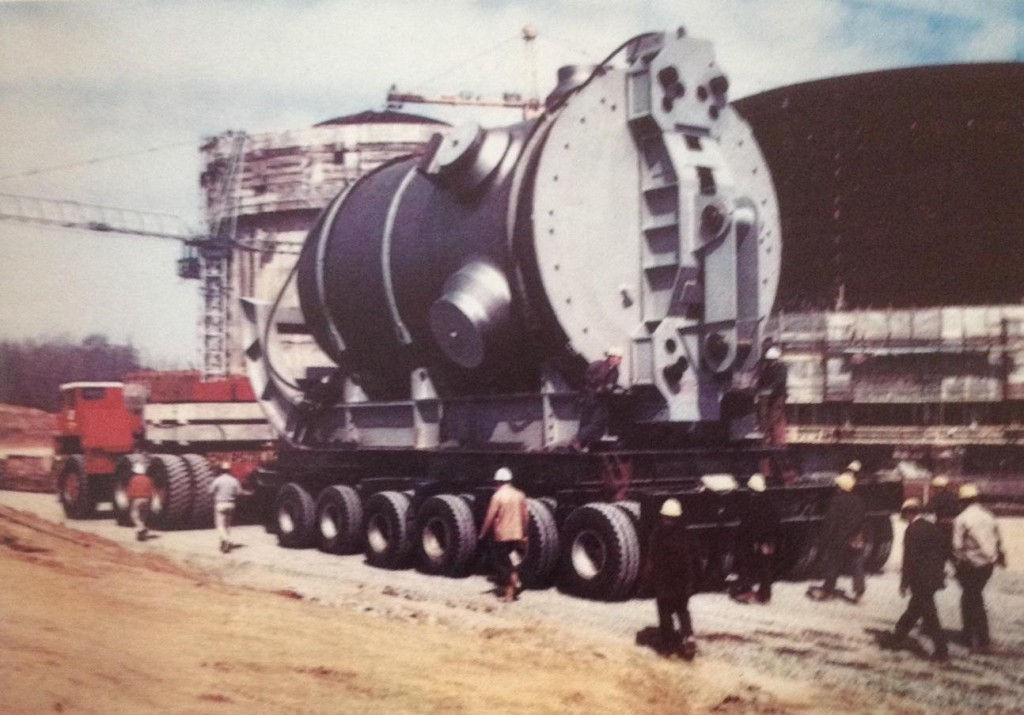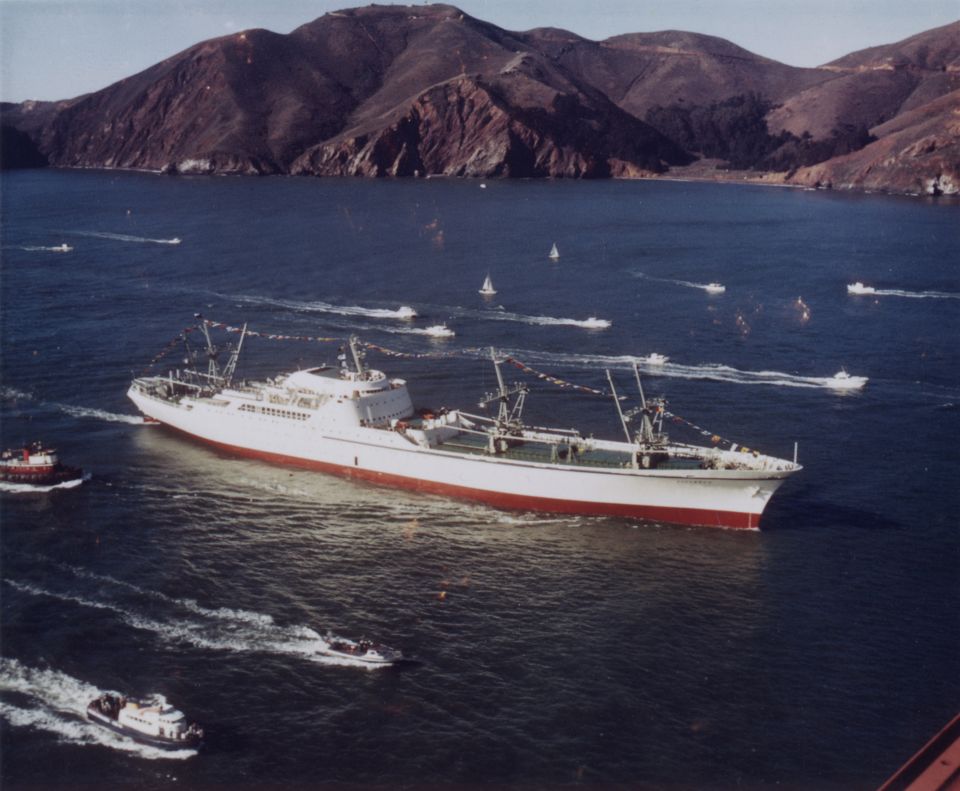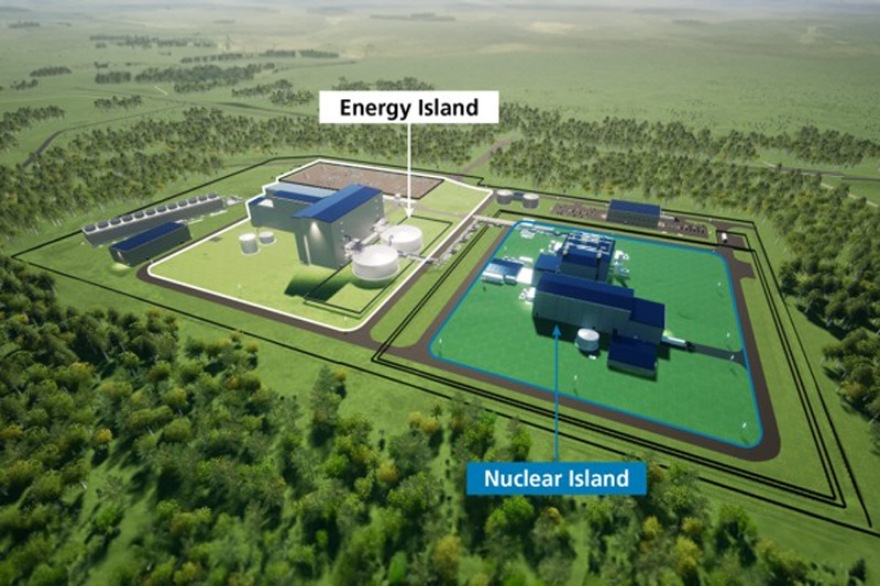Nuclear Plant Construction Delay and Cost 3
The year 1971 saw a continuation of the general trend of rising capital costs for all types of power plants, described by the U.S. Atomic Energy Commission (AEC) in its publication for 1971 as having "risen rather rapidly." According to the AEC, the aggregate major causes for the increases in costs specific to nuclear electric power plants were as follows, with author's analysis accompanying each:
- Late delivery of components. This problem had cropped up as the enormity of nuclear plant orders right at the end of the last decade hit, and vendors were forced to begin to increase delivery times. However, expansion of domestic capacity and the influx of foreign made reactor vessels and turbine generators alleviated the largest sources of concern; indeed, the same volume which points up this delivery problem also notes on a later page that, for example, domestic reactor vessel manufacturing capacity "would probably be adequate for the next ten years."
- Scarcity of skilled labor: This same problem has occurred today, that is to say in modern times, as the United States attempts to restart an industry essentially dormant for several decades. In the early days, experienced labor (and design engineers for that matter) could move from project to project, but as the flood of plant orders came in it became impossible to build the desired plants on the experienced labor and design personnel alone. Much "new blood" had to come into the industry, and this took time to train and develop. Errors caused by inexperience led to high costs when equipment had to be pulled out, reinstalled and re-certified.
- Necessity for backfitting to meet safety requirements: This item is the age-old "moving goal posts" problem, still extant today. It requires no explanation other than to say it was and is the result of having a design frozen but the regulations covering it not frozen. It must be pointed out that in just a short time the Calvert Cliffs decision would make this problem worse, at least in terms of cooling if not safety - and Three Mile Island would make it worse by an order of magnitude.
- Delays in the licensing process: The AEC was being asked to not only license an ever-increasing number of plants but to review an ever-increasing number of varied designs. These varied designs, be it of Nuclear Steam Supply System (NSSS) or containment or any subsystem were a result of the "shaking out" of the design / development process, and also were a result of the competitive picture in which a number of vendors were competing for the same business. This problem would soon result in the AEC first suggesting and then mandating a freeze on unit power growth, and fixing of designs for pre-licensing.
- Rapid increase in equipment, material and construction labor costs. This factor is largely the result of inflation, although it should be pointed out that as specialized trades developed they could and did demand higher pay for their necessary work. The AEC report for 1971 does add however that "The cost for the NSSS portion of the plant, however, has remained relatively stable over the last several years," reflecting that other plant and project costs were spiraling up above that of major components. Indeed, a typical cost for both the NSSS and TG in the mid-late 1960's might be roughly 25-50% of the total base cost of the plant; by the last half of the 1970's their cost together was roughly 12% of the base cost of the plant, even though by then the NSSS cost had begun to rise once more. Soon, indirect cost (engineering, management) would begin to become a very significant portion of base cost, rising to 25% of the base cost of a plant by the end of the 70's.
Facility Licensing
A major concern of the Atomic Energy Commission during 1971 was the skyrocketing burden of licensing procedures - some of which, frankly, were under its control and some of which were not. The AEC report on 1971 (The Nuclear Industry 1971, WASH-1174-71) details these problems well on page 179 under Licensing and Regulation:
"As a result of the continuing orders for nuclear power plants, there has been a steadily increasing licensing burden on the AEC regulatory organization. Increased time and effort have been required on the part of both industry and Government to process construction permits and operating licenses for nuclear power plants. A number of factors have contributed to this problem, such as an increase in applications due to the number of orders in the 1965-1968 period and the need to meet the new requirements of the National Environmental Policy Act of 1969 and the Water Quality Improvement Act of 1970, the increased number and duration of public hearings on licensing actions, as the result of an increased number of interventions on the part of those concerned about the effects of nuclear power generation on the environment and on the public health and safety, and most recently the Calvert Cliffs court decision and the Commission's revised regulations in conformance therewith."
(It is of interest to note in the preceding paragraph the AEC's reference to public hearings, which is the direct result of the earliest phalanx of organized opposition to nuclear power plant construction - a topic we will learn much more about in a later installment of this series of ANS Nuclear Cafe articles.)
Mentioned for the first time in these 1971 writings is the monumental Calvert Cliffs decision - a landmark court case that affected all nuclear power plants thereafter. Any historical texts about the construction of nuclear power plants in the 1970's will mention this proceeding. To wit: (WASH-1174-71, p. 182)
"On July 23, 1971, the Court of Appeals for the District of Columbia Circuit issued a landmark ruling on litigation involving the Calvert Cliffs Nuclear Plant of the Baltimore Gas and Electric Company and the Atomic Energy Commission's implementation of the National Environmental Policy Act of 1969 (NEPA). The Court directed the AEC to revise its rules concerning consideration of nonradiological environmental issues in the licensing of nuclear facilities. These rules had been issued by the AEC in the implementation of NEPA."
To make a long story short, what happened was this: The AEC had done what it felt was necessary in the implementation of NEPA, in saying more or less that nuclear plants' thermal effects in rivers, etc. were covered well under rules it included in the licensing process. What now had to happen as a result of the court finding this approach in error was that nuclear power plants now had to perform full Environmental Impact Statements.
According to materials in this author's library from the AEC and from several prominent architect-engineer firms operating in the 1970's, the broad range result of the Calvert Cliffs decision was an immediate increase in the time to construct a nuclear plant of two years - added to the nominal six already expected. Normally in the past, when a utility had made the decision to construct a nuclear plant an architect-engineer firm was engaged to begin the process to select an NSSS vendor, develop a plant design (unless it was started from an established basic plan such as used by Stone & Webster, Sargent & Lundy and perhaps others) and begin to move toward the process with AEC to procure a construction license. Now, post-NEPA / post-Calvert Cliffs, the architect-engineer would also immediately have to launch into developing the Environmental Impact Statement and getting this approved prior to being able to begin construction. As mentioned, this added two years to the construction time - two years right on the front, before construction could really begin. Naturally, the architect-engineer firms were forced to hire additional large numbers of staff to assist the utilities with these involved procedures - and we've already in this installment noted the detrimental effect of large scale short term hiring.
Further from the AEC on Calvert Cliffs, in 1971:
"Based on present AEC estimates, the revised regulations will directly affect 66 license applications involving 97 nuclear power reactors. In addition to these, the regulations affect five nuclear power reactors which received operating licenses after January 1, 1970, the effective date of NEPA, and 10 provisional operating licenses issued before 1970. Naturally, all future applications for nuclear power plant permits and licenses will be affected as well."
As we can see by the number of units affected (not all of which were eventually completed) the effect on the whole enterprise of nuclear energy was immense - and permanent. We have not seen the last mentions of this litigation in our studies; it will come up again.
Next time: The AEC did not publish WASH-1174 in 1972, but did in 1973 and 1974 where we will again take up our examination. Future installments also include analysis of delay by the Atomic Industrial Forum in the 70's, and the AEC's own examination of organized opposition to nuclear plants and the effects of it.
Earlier installments are here and here.
Feel free to leave a constructive remark or question for the author in the comment section below.









